#83: Working Class Heroes
I have a confession to make.
I haven’t been wearing my Hat of late.
I fell out of doing so during the long lockdown, when I wasn’t going anywhere and I was pretty much trapped in my house for weeks on end. As the situation eventually lifted a bit and I ventured forth again, the weather was warm enough where it seemed like more of a hassle than it was worth. And so I’ve largely run Hatless ever since.
Now, there are some exceptions. I did take it up earlier in the month for New York Comicon, figuring that was an official public function and that I ought to appear in my natural aspect. And I wore it at points during the family’s vacation the month before. But outside of that, it’s remained in its hanging position by the door, always on call and ready for action but not often drafted back into service.
That said, I did have enough foresight to name this Newsletter Man WITH A Hat rather than Man WEARING A Hat, so I figure things are still on the right side of the line so long as I don’t get rid of it entirely. And as the weather grows colder, it gets more likely that I’ll be turning to my hat on a more routine basis.
Just thought you’d all like to know that.
Photo by Eliot R. Brown from the John Romita memorial at the Society of Illustrators earlier in the month. As you can see, I not only wore my hat, but was flying the flag of my new assignment for NYCC earlier in the day. That’s Carl Potts on the left, Tom DeFalco on the right.
Right, let’s get into this week’s questions and answers next:
Jamie Weinman
Here's a question, though the answer might turn out to be a spoiler about your approach so feel free not to answer: in preparing for the job, were there any X-comic runs you read that you now think were not as well known or acclaimed as they deserve to be?
To be honest, Jamie, I haven’t really been reading old X-MEN runs in preparation for the gig. I’ve kept up with the series intermittently over the years, and while it’s possible and even likely that I’ve missed certain story developments of note, I’ll avail myself of the resources of the internet as needed to get up to speed. That said, a while back I did read a MARVEL MASTERWORKS volume that collected issues in the very early 200s that I had bought when they were new. But revisiting them again for the first time in many years, I was struck by how solidly crafted they all were—enough so that I told this to Chris Claremont and JRJR, who had drawn most of them, at the aforementioned Romita memorial.
Jeff Ryan
Has a comic company ever experimented with what in user interface is called an A/B test? Release 50% of a comic with a Character A cover, and 50% with a Character B cover, in order to see which cover sells better? And maybe which character is more likely to move more books in the future? It'd be a bit pointless now -- "boy, I wish there was a way I could hear the opinions of comics fans" -- but maybe in the 1970s or 1980s it could have generated some usable metrics.
As I’m sure you’re aware, Jeff, we’ve done all sorts of releases over the years with “order-all” cover options whereby a particular retailer can order as many copies of each cover as they like without needing to hit any sort of minimum thresholds, which more or less tracks with what you’re talking about here. And from that, we’ve gleaned certain information about certain artists, sure.
JV
I loved the Avengers/JLA crossover - a great capper to the stellar Busiek/Perez Avengers run.
Can you share what the original plan was for issue 3? I seem to recall reading about some 'amalgam' type universe that mixed and matched the heroes and villains (Iron Man/GL amalgam) - can you share details and why it was changed?
This is detailed at length in the big oversized slipcovered AVENGERS/JLA collection, JV, but given how rare that book must be at this point, to say nothing about pricey, I understand that it may not be easily available to most folks. So here’s the short version. When we first sat down together and plotted out all four issues, there was going to be a section in the third issue dedicated to the idea that the DC heroes were created in the Marvel Universe and the Marvel heroes were likewise created in the DCU. As one of the things we were trying to do in the course of the series was compare and contrast the two fictional worlds, this seemed like a clever thing to do when we first came up with it. But when it came time to actually write and execute the issue, it was a section that flummoxed us. Kurt wrote at least two entirely different drafts of such sequences, but neither of them really worked. And the reason was that, while the Marvel and DC Universes of, say, the 1960s were very different places, by 2000 when we were doing the book, they had aligned a lot more closely that we had thought about. Eventually, we discarded this entire avenue and did other things—but that created new problems that torpedoed the plot for the rest of the series.
Arthur Cadeaux
Tom, once again you've mentioned that you thought JLA/Avengers #3 was where the series went off the rails, at least a little. You've mentioned this several times over the years, but have never explained why (or what happened) to make you feel that way. As a reader, I remember thinking that it was an interesting but uneven issue that didn't really advance the plot until the very last part of the book, when the two teams resolve to take the fight to Krona. Are you able (and willing) to provide the back story on this issue?
Well, Arthur, the real problem came after we’d decided to excise the sequence i was just talking about from the series. See, when we began, there was an overall plot outline that everybody had agreed to and signed off on, Marvel and DC both. But in cutting that sequence from it, we were deviating from that agreed-upon plot. And this provided the opportunity for the DC editor, Dan Raspler, to start to question everything else that we were doing in the rest of the series, since the precedent had been established. Dan had a bunch of issues, but his main one seemed to stem around the use of Barry Allen and Hal Jordan. Likely because he’d been involved in some of the storytelling involved, Dan was very much invested in DC’s then-position that Wally West and Kyle Rayner were now the Flash and Green Lantern and would forevermore be. He also felt that there was an aspect to the back half of the story that read to him like the comic books of old had been great, but everything that had happened since, through the 1980s and 1990s, had damaged the characters. I didn’t necessarily disagree with him, but it was a concern, and one that we now had to address. In the original plot for the final two issues, there was an organizing principle: as you see at the beginning of the published issue, the League and Avengers that we started off with was the classic versions, the ones who would have been in George’s aborted JLA/AVENGERS project of the 1980s. And the idea was that they’d realize that they had to storm Krona’s Galactus-derived base in order to stop them, but if they did so, all of the stuff that had happened to them since that time would once again be restored. So Hank Pym would strike Jan, Barry Allen would give his life in the Crisis, the Vision would be dismantled and his marriage to the Scarlet Witch undone, and Hal Jordan would go murderously crazy. And the heroes would have to decide that the greater good was more important, and go ahead with the assault. Thereafter, as the united teams breached barrier after barrier towards the center of Krona’s base, they would jump forward in time—meaning that the cast would shift to the League and Avengers rosters for those appropriate eras. You’d begin with the classics, then they’d take a hill and suddenly be the Roger Stern-era Avengers and the Giffen/DeMatteis League. After another hill, it’s be the Bob Harras/Steve Epting Avengers and the Dan Jurgens JLA. And so on. Until, once they reached the center and the climax, you’d be back to the modern League and Avengers for the finale of the fight. This was a way to allow George to draw all of the alternate versions of the characters that he wanted to do, and provided an organizing principle for the whole thing. In the final book, it’s all random, with Leaguers and Avengers swapping in and out without any particular rhyme or reason, and it felt much more like random inconsequential fan service than anything else. I hate it, it really bugs me. But in trying to be a good partner with DC, I let things go too far when I maybe could have put a stop to them earlier, and we killed a week or two revising and re-revising that #3 script endlessly and winding up with a final result that wasn’t just a compromise, but which was compromised. A complete failure on my part, and one that I should have prevented.
Jimmy Benito
Generally speaking, what factors are considered when deciding how many books a line will consist of? Do the number of marquee characters factor in? Is there a sweet spot number that Marvel tries to aim for? The X-Universe has sooo many characters so I've always been curious about what goes into deciding how many books to put out at any given time.
Well, Jimmy, this is somewhat decided by the needs of the publishing division as a whole. As I’ve explained in the past, we need to put out a certain overall number of titles, each one generating a needed profit margin, in order to pay for our overhead and keep the division profitable. So while there’s a bit of an ebb-and-flow to this, in general you’re likely to get approximately the same general number of releases in a given family of titles month after month. Which is to say that those folks who were hoping that the X-Men line would go down to only 4 books are in for a world of disappointment. We maybe won’t have quite as many at the jump as the end of the outgoing era does, but it’ll still be in the neighborhood—and will likely increase as we move ahead and more stuff gets green-lit.
Spike Stonehand
is there a reason modern re-releases will recolor these entirely, with digital colors that are often quite garish? I can see cleaning up a spot here or there, but entire digital recoloring seems to disregard and disrespect the artistic choices of the era. Sure, they were dealing with limitations, but so is everyone. We might think a particular Kirby story wasn’t inked perfectly, or some of the Lee co-plots weren’t perfectly paced, but you wouldn’t re-ink it or remove “unnecessary” panels on a re-release. So why is it the industry standard to entirely recolor?
I’m not entirely sure what you’re talking about here, Spike, in terms of the specific aspect of the coloring on reprints that you’re looking at. You’d need to point me to a specific example or two. Everything we reprint is recolored so as to not be limited to the poor registration and the coarse dot screens of the comics of years past. But in terms of the actual coloring, our efforts in virtually every case are to base that coloring on the original. Now, we use different papers these days, and work with different line screens, and that means that the exact same color choices will look different on the different stocks. But that’s about the porousness of the paper and the manner in which it takes the ink as much as anything else. We’re also trying to duplicate the pristine colors, rather than colors that may have shifted a bit over the years as the paper those comics were originally printed on has yellowed.
Justin Wilder
The scope of “main” characters that fall under the X umbrella gets wider with every new generation of mutants. Many memorable stories play off those beats of individual character/relationship continuity and how they respond to a given plot - Storm's hair/look being reminiscent of her 80s character revolution as a freer, more badass leader; concern over Rockslide as he's been dead and effectively written over with a new character. Each character has their own complex story across publication. What strategies have you taken to familiarize yourself with a line that’s so large?
Um, not really any, Justin, apart from having followed the X-books with some regularity since 1978. But there are resources that I can turn to if I need to know something, including the Handbook research team. But honestly, while I’m sure I’ll louse something up somewhere along the way, I do have a pretty good memory for this stuff. Though I didn’t remember that Stevie Hunter became a Congresswoman until it came up when we were talking about her a few weeks back.
ComicbookDad531
I saw a DP7 cover on twitter last week and I have a question. Whose idea was it to introduce the new universe concepts of Starbrand, Nightmask, Justice, etc. into the main Marvel Universe and then make them such a huge part of Hickman and Aaron’s Avengers runs?
Well, Warren Ellis reimagined the New Universe concepts in the early 2000s as NEWUNIVERSAL, with some help from Kieron Gillen, Dad. But it would have been Jonathan Hickman who saw something appealing in Warren’s new take on the material and who chose to bring it all into the mainstream Marvel Universe in AVENGERS.
Get_it_away
A few weeks ago you mention that next year's event was already being worked on. Obviously, at the time, you didn't give any specifics, but were you referencing the recently announced Blood Hunt?
Yes, that was BLOOD HUNT, Get. Got a bunch of very nice pages for issue #2 just this past week.
Matthew Perpetua
As an editor how do you get a sense of the popularity of artists, particularly newer artists? Does Marvel in general have ways of keeping tabs on who's "hot," as Wizard used to put it?
It really isn’t that hard, Matthew. If a book is selling, and if retailers are telling us about how their clientele is reacting to a particular talent, that’s a pretty good indicator. But even without that, we have a relatively good sense as to which artists are the most likely to hit with audiences. One of the reason we do our regular Stormbreakers classes is to help bring some attention to up-and-coming artists whom we think do work that has the potential to be extremely popular.
Nacho Teso
Is the newly announced Avengers Twilight a project originally conceived for the Chip Zdarsky What If line? Or an spin-off of ideas born when that project was planned?
AVENGERS: TWILIGHT pre-dates Chip’s What If concept by a good long while, Nacho. It’s seriously one of the projects that’s been worked on over the longest amount of time in my tenure. But when Chip came on board to do the series after SPIDER-MAN: LIFE STORY was wrapped up, there was a moment or two where we thought we might release it as a part of that What If effort. By this point, though, i don’t know that there’s any particular benefit to doing so, as other WHAT IF projects have come and gone and the name doesn’t mean what it was meant to when Chip was rolling out his stuff.
Behind the Curtain
.After talking a little bit about this a week or so ago, I went ahead and dug this out so that you all could see it for yourselves. What you will find below is Bill Jemas’ write-up on WORKING CLASS HEROES, his revamp of FANTASTIC FOUR that caused Mark Waid to be fired and which eventually mutated into MARVEL KNIGHTS 4.
I seem to think that there may have been another document in addition to this one that laid out a few of these ideas in greater depth, but if so, I couldn’t lay hands on it anywhere.
Pimp My Wednesday
A small week this time out, and one entirely dedicated to Earth’s Mightiest Heroes!
Hey, I don’t know if you’ve heard, but THE MARVELS opens in just a few weeks on November 10th. so you may want to check that film out, it looks to be a lot of fun. Anyway, AVENGERS #7 begins a new storyline, “Twilight Dreaming” which will see the Avengers up against an established threat from within the Marvel Universe. It’ll also showcase the Twilight Court, who made their first appearance in TIMELESS last December and who are a big part of Jed MacKay’s macro-story moving forward. Back on art duties for this issue is regular artist and Stormbreaker C.F. Villa, and it’s got a very cool cover by Stuart Immonen that you can keep an eye out for.
And over in the digital space, AVENGERS UNITED continues with chapter four, as Captain Marvel and her team take on a killer brute on a mission of assassination. It’s written by Derek Landy and illustrated by Marcio Fiorito, and it’ll go live on Thursday.
A Comic Book On Sale 55 Years Ago Today, October 29, 1968
There was a recent conversation online between Dan Jurgens and Karl Kesel in which they spoke about how the cover to this issue of BAT LASH by Nick Cardy may be one of the absolute best covers in comic book history, and I have to agree with them. Cardy is one of the finest cover artists ever to work in the medium, and after he became DC’s regular go-to cover artist (often working over sketches by Publisher Carmine Infantino) he produced one knock-out image after another in the late 1960s and early 1970s. But this one is exceptionally good, in part because all of the elements work together flawlessly—the coloring, the design, the use to white space, the overall composition, and the tenseness of the situation. It is superlative. As is the series it ran on. DC was very committed to releasing a variety of material across all genres, and they’d had a lot of success with western titles over the years. But by the late 1960s, tastes in westerns were changing, with the more violent “spaghetti westerns” of Sergio Leone and his compatriots getting a lot of attention. The days of simplistic white hats and black hats was a thing of the past—contemporary audiences demanded more ambiguity in their western stories. In response to this movement, DC put out BAT LASH, the joint creation of Joe Orlando, Carmine Infantino, Shelly Mayer and Sergio Aragones and whose stories were typically plotted by Aragones, scripted by Denny O’Neil and illustrated by cover artist Nick Cardy. It took a village sometimes. Bartholomew “Bat” Lash was cast in the mold of television’s Bret Maverick. He was a western character who appreciated the finer things in life: wine, women and song, and he didn’t like violence, although he was a fearsome shot. He was a reprobate who would travel from place to place, getting into and out of trouble and generally being a bit of a roguish ne’er-do-well. It was a great strip, and it’s well-remembered, but the series only lasted for seven issues following its debut in SHOWCASE. Infantino had a reputation for being fast on the trigger when it came to cancelling titles that he didn’t think were working—the late 1960s are littered with interesting and well-executed series from DC that only lasted a half-dozen issues. Possibly, the corruption of the affidavit returns process in the distribution system made it just about impossible for any new series to gain traction. Or it could just be that Carmine was jittery about letting any book go on long enough to lose money. Either way, BAT LASH went to boot hill—though the character became a recurring mainstay who drifted into and out of DC’s other western series over the years. As far as I can tell, there’s never been a collection of the original run of BAT LASH, but there really ought to be. I’d certainly pick up a copy.
A Comic I Worked On That Came Out On This Date
1997 wasn’t a great time for Marvel. The company was in bankruptcy, and the leadership kept constantly changing on what felt like a weekly basis. Amidst all of this, the publishing area continued to make comics and remain profitable. And some things were tried that might not have under other circumstances. I was the champion of doing SPIDER-MAN: THE MANGA and I edited the first half-dozen issues before it was handed off to others to helm. Turning back the clock: in the early 1970s, in an effort to bring Marvel characters to a global stage, a deal was made with publishers in Japan to reprint and release contemporary Marvel material. It was a decent effort, but the books just didn’t sell. Even then, the differences in style and approach between Japanese manga and American comics were simply too great. Manga was produced very cinematically, with relatively little copy per frame. Whereas the Marvel books of that era were text-heavy, and attempted to be flowery. it was a total mismatch. Undaunted, the publisher Kodansha explained the problem to Marvel’s Stan Lee and proposed a solution: give them the rights to produce a localized version of Spider-Man exclusively for the Japanese market. Rather than being Peter Parker, the character became Yu Komori, a Japanese student who adopted the heroic guise of Spider-Man after he was bitten by an irradiated spider. But the stories were set in Japan, with the rest of the characters adapted to that environment. This Spider-Man doesn’t have an Uncle Ben whose death motivates him, rather it’s the fact that in one of his first exploits an innocent person gets killed that motivates him to use his strange powers for justice. The manga was written by Kosei Ono and Kazumasa Hirai and illustrated by Ryoichi Ikegami, who would later create the popular series CRYING FREEMAN. It ran serialized in MONTHLY SHONEN MAGAZINE from January of 1970 to September of 1971, and was modestly successful. The material was collected several times over the years in Japan, but it was pretty much unheard of in the States. And that’s where I come in. At some point in the mid-1980s, on a shopping trip to the Japanese bookstore Kinokenia, I came across a few volumes of the manga and purchased them. I couldn’t read them, of course, not understanding the language, but they were visual enough in their storytelling that the basic beats were clear even without copy. So it was a neat novelty. But in the mid-1990s, the contract given Kodansha the rights to Spider-Man expired, and control of the material returned to Marvel. Upon hearing this, I advocated for releasing an English translation. My ultimate goal was to get enough material done that it could be collected in a manga-style paperback-sized collection, but I was a hair too far ahead of my time, and so that never happened. But as all of the material was paid for and the strip was black and white, I was able to show that it would make the necessary profit even with the cost of translating and relettering. This first issue came out on October 29, 1997. The thing i remember the most about it is this cover, which I fought against and ultimately lost. I had wanted to use the painted images that had been done for the manga on the cover (as happened on the next couple of issues), but the promotions department had put together this strange image using a Spider-Man action figure for an ad, and they wanted it used on the actual book. Bob Harras didn’t care either way, and so he forced the thing on me. It doesn’t look terrible per se, but it also doesn’t convey the material inside at all. And it’s dark—Spider-Man doesn’t pop enough against that Rising Sun background (which is a bit offensive today.) On a related note, the person who would up doing the production work on the series was the late Dan Nakrosis, who had done restoration work for me on MARVEL MASTERWORKS volumes and who was a fan of manga and had a good grasp on the material. Dan did the lettering and all of the production necessary to flop the artwork (since manga is read right-to-left in the style of Japanese, rather than English’s left-to-right orientation), but to produce the translation, he turned to a pair of friends he knew from working at Central Park Media: Mutsumi Masuda and her husband, C.B. Cebulski. This would have been C.B.’s first work for Marvel.
Another Comic I Worked On That Came Out On This Date
Now this is a book that I really like, even though it[‘s largely been forgotten. The MARVEL 75th ANNIVERSARY CELEBRATION Special was just what it says: a one-shot released to coincide with Marvel’s 75th birthday and to commemorate the company as a whole. It’s the precursor to the birthday books we’ve been doing the past couple of years, such as MARVEL COMICS #1000, AMAZING FANTASY #1000 and MARVEL AGE #1000. And it shares a lot of the same DNA in its approach. It’s cover is one of my favorites. It was painted by Paolo Rivera and based on a small sketch I had done, though Paolo packed it with much greater texture and subtlety than what I had proposed. In particular, I remain amazed that he painted a reproduction of the cover to MARVEL COMICS #1 in the center of it, including the back cover—that back cover you see there is accurate to the original book. The issue itself contained a variety of short stories and features, a couple of which are real favorites. The opening tale is one of these, written by James Robinson and illustrated perfectly by Chris Samnee. It was built around a very simple premise: at the moment that the Fantastic four are about to set off on their fateful space flight and kick off the beginning of the Marvel Age, what were other notable characters, someday-heroes and villains, doing at that moment. Robinson made a meal out of that idea, with some lovely insights, and Samnee went to town in depicting everything from Don Blake taking off on a vacation to Scandinavia to a young Kamala Khan playing behind her house. It’s a real lost classic, one that I don’t think enough people have read—I need to get it reprinted one of these days. The book also included the very last story Stan Lee ever wrote for Marvel—which was actually his first story. As some know, the first thing Stan ever wrote in comics was a two-page text story in CAPTAIN AMERICA COMICS #3 in 1941 which was necessary to fulfill second class postage regulations. My brainstorm was to turn that short story into a proper comic book adventure, and I convinced Bruce Timm to handle the adaptation. Despite the fact that his eyesight was failing badly by this time, Stan produced the final copy for the story. There was also a Jessica Jones solo story, the first since ALIAS had closed up shop, by Brian Michael Bendis and Michael Gaydos in which Jessica investigated a mystery whose roots went back to MARVEL COMICS #1. Brian also wrote a series of one-page gag covers, “Marvel Comics We Never Did” alongside a crew of superlative artists, dedicated to things such as POWER PACK as a MAX title, a Squirrel Girl wedding cover loosely based on a 1960s WONDER WOMAN cover, and a crossover between all of the assorted licensed properties Marvel had featured over the years, which is almost entirely redacted by the legal department. It was very fun stuff. I also had the idea of drafting in Stan Goldberg, who had been the colorist of the Marvel line back during the Marvel Age and who had been drawing ARCHIE for two decades to do a Spider-Man story that was really just an Archie story. Tom DeFalco, who started his career at Archie, wrote it. There was also a Wolverine story by Len Wein and Paul Gulacy that was left over from some other project that we included in this issue, as it seemed to fit the remit well enough—that story was edited by Mike Marts rather than myself. The book closed with a page commemorating all of the assorted Marvel creators who had passed away by that point. I did the same thing more comprehensively in MARVEL COMICS #1000 a few years later, but it was still nice. So it’s an issue that I’m very happy with and it went on sale October 28, 2014.
Monofocus
One of the problems with watching shows on streaming platforms is that you can never quite be sure that you’ll be notified when new episodes drop. That happened to me again this week when I found out that the third season of Amazon Prime’s UPLOAD had begun airing. It’s a strange high-concept series that sits somewhere between being a comedy and a thriller, concerning a digital afterlife that people can pay to be uploaded into before they die. But of course, there’s a catch and a conspiracy. I’ve only seen one episode of the new season, but it evidenced the same idiosyncratic mix of uncomfortable laughs and interesting world-building. Thinking about it, I suspect that it would appeal to viewers who were fans of SEVERANGE, especially while waiting for new episodes of that series.
I’m also in no way a sports guy, never have been despite my father’s obvious efforts to the contrary. But I do love sports as narrative, and so I checked out the first episode of the documentary BECKAM on Netflix, devoted to the career of the famous footballer. I have no memory of any of the details of Beckam’s career since it was taking place primarily in the UK, and don’t really have any connection to him as a person either. So I consequently found it all pretty interesting, as each development was a new thing to me and not just a piece of history of which I’d been aware. Not sure how quickly I’ll be able to circle back around for the other three parts of the thing, but it’s likely that I will at some point.
I also started re-watching MAD MEN after seeing a retrospective video about an aspect of the show. I watched it regularly when it was airing new from 2007-2015, but since then I don’t know that I’ve thought about it all that often. And I had forgotten just how sharp a series it was, especially at the outset. The 1960 period is amazing from a visual standpoint, there’s a lot of fun to be had with the culture clash between what was acceptable then and what is today (I died when Peggy’s doctor came in to do her exam while smoking a cigarette in the pilot) and the cast is uniformly great. But what I’m most interested in is the fact that this is drama where there isn’t really any sort of physical conflict, and how many shows can you say that about? In almost anything, there’s some obstacle to be overcome, some physical challenge to be met or out-thought. But here, the conflicts are almost all internal: a sense of incompleteness, a dissatisfaction with one’s lot in life, a yearning for something more. It’s amazing that such ineffable stakes could remain so compelling to so many viewers over so many years. And that’s why I think it’s worth studying.
And I also finished up watching JUSTIFIED this past week, and rolled right on into the recent sequel series, JUSTIFIED: CITY PRIMEVAL. And I have to say, the show remained enjoyable all the way up to the end, though it was clearly growing more difficult for the creators. They had rightly sussed out the fact that the engine that was keeping people coming back episode after episode was Walter Goggins’ scenery-chewing turn as the villainous Boyd Crowder as well as his relationship with the slowly-corrupted Ava Crowder. But as scheme after scheme went bust, it stretched credibility further and further than the pair would remain both alive and at liberty to try something new the following season., so it’s probably just as well that they ended the show when they did. The sequel is an interesting beast two episodes in. It’s not really the same show at all, but rather a completely different show that happens to have the same character, Timothy Olyphant’s Raylan Givens, as the lead. I’m not entirely certain how I feel about it just yet, but I expect that I’ll continue on down to the end of the line having come this far.
Posted at TomBrevoort.com
Yesterday, I reported on the findings of a couple of readers who located even earlier comic book letters pages than the one that I had previously featured.
And five years ago, I wrote about the rather misogynistic sixteenth episode of STAR BLAZERS
All right, that’s about going to do it for this time out, you have yourself a good week and I’ll hopefully see you back here again in seven days.
Hat’s All, Folks!
Tom B


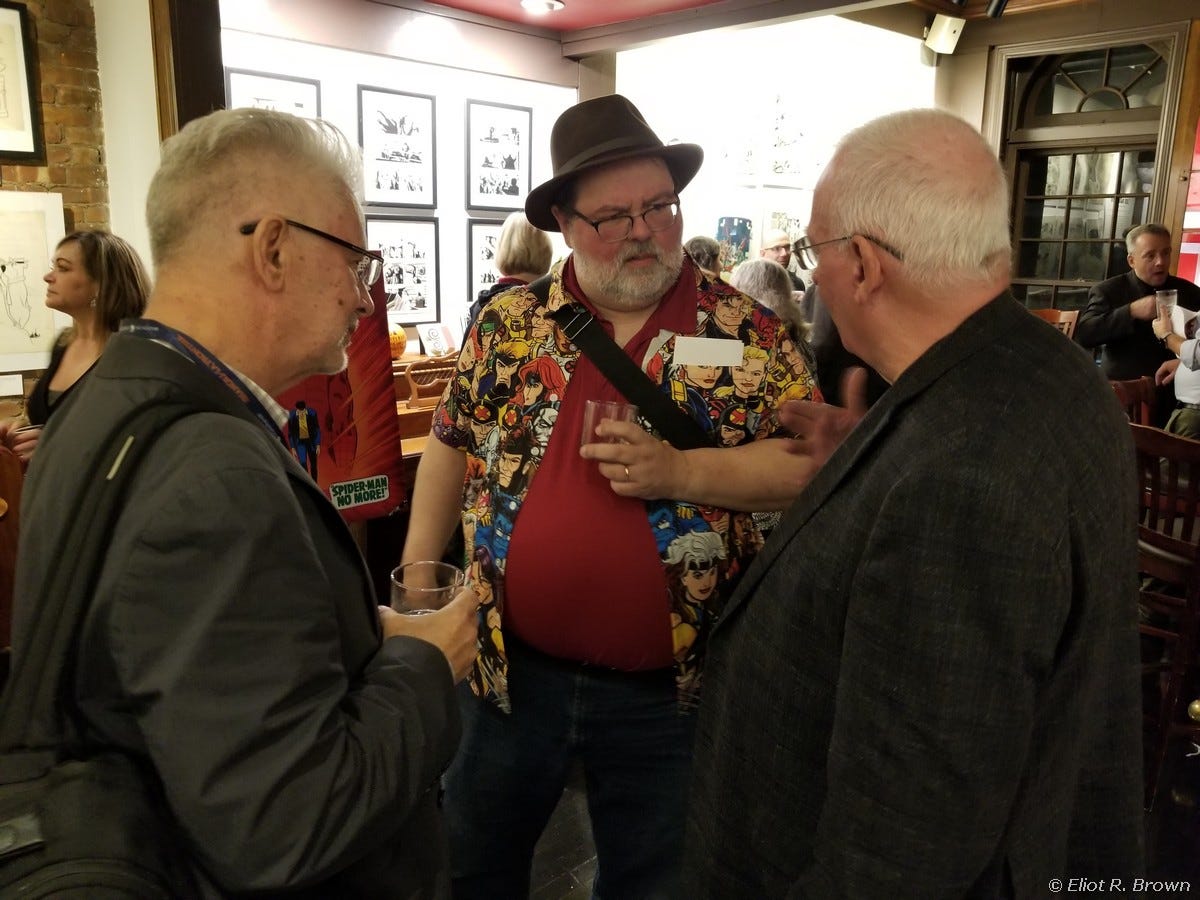
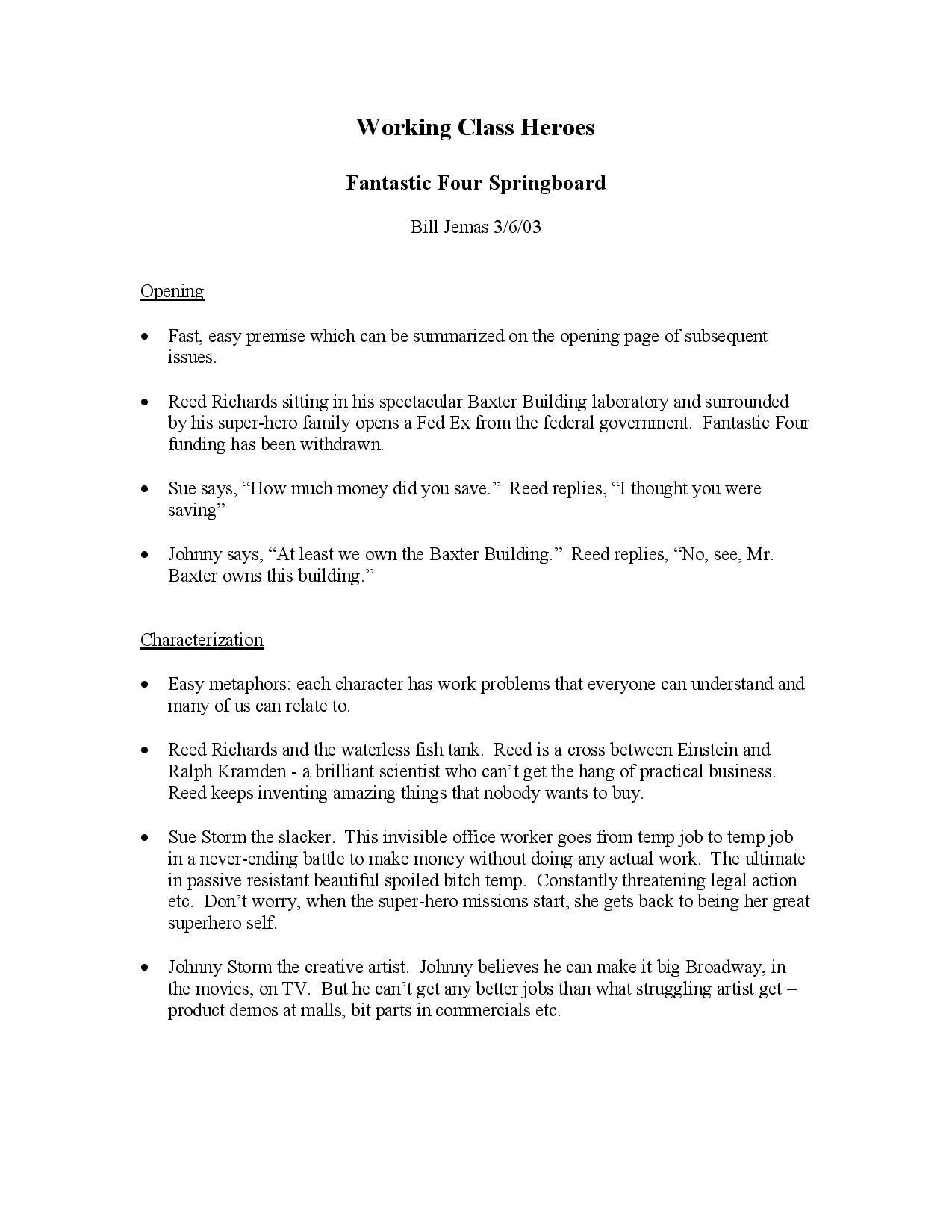
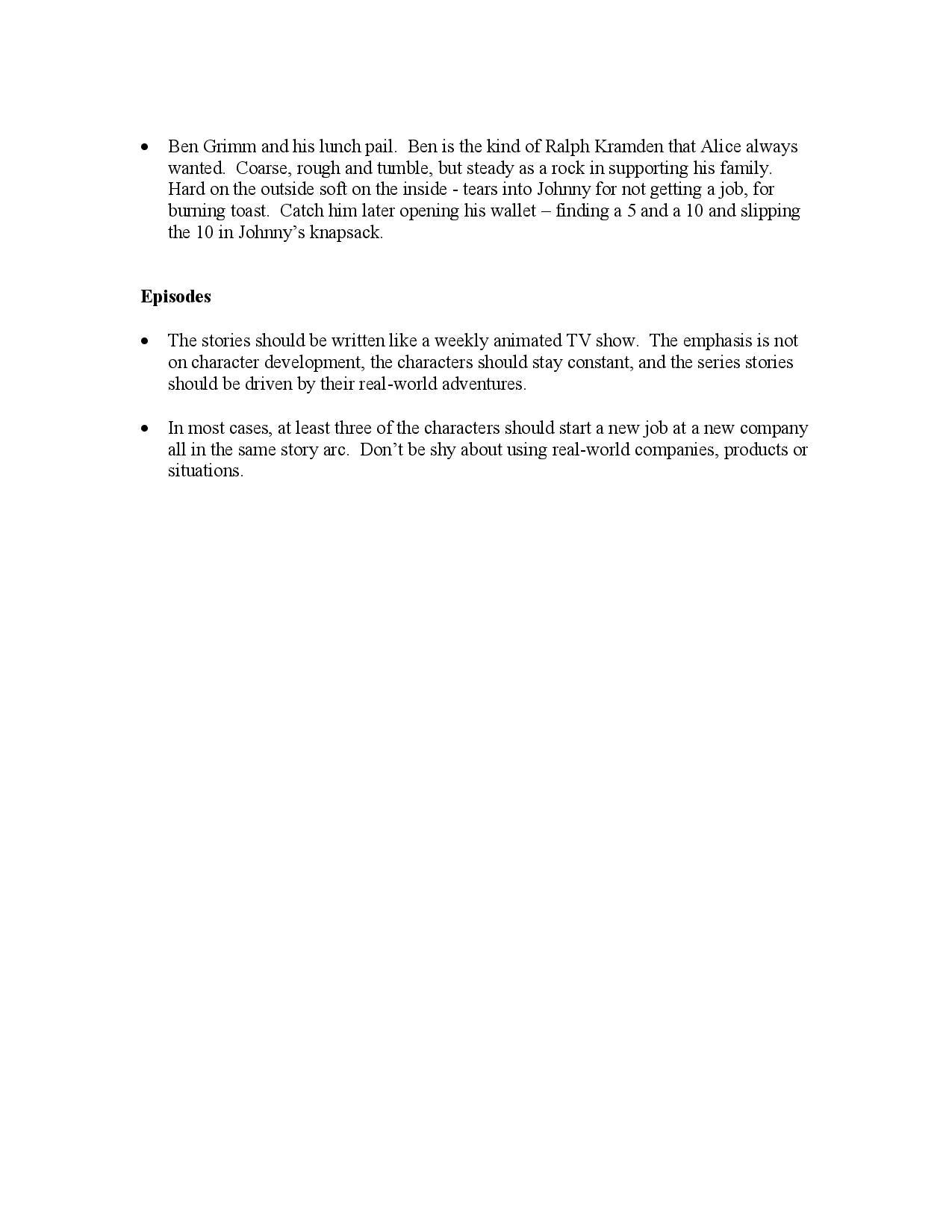
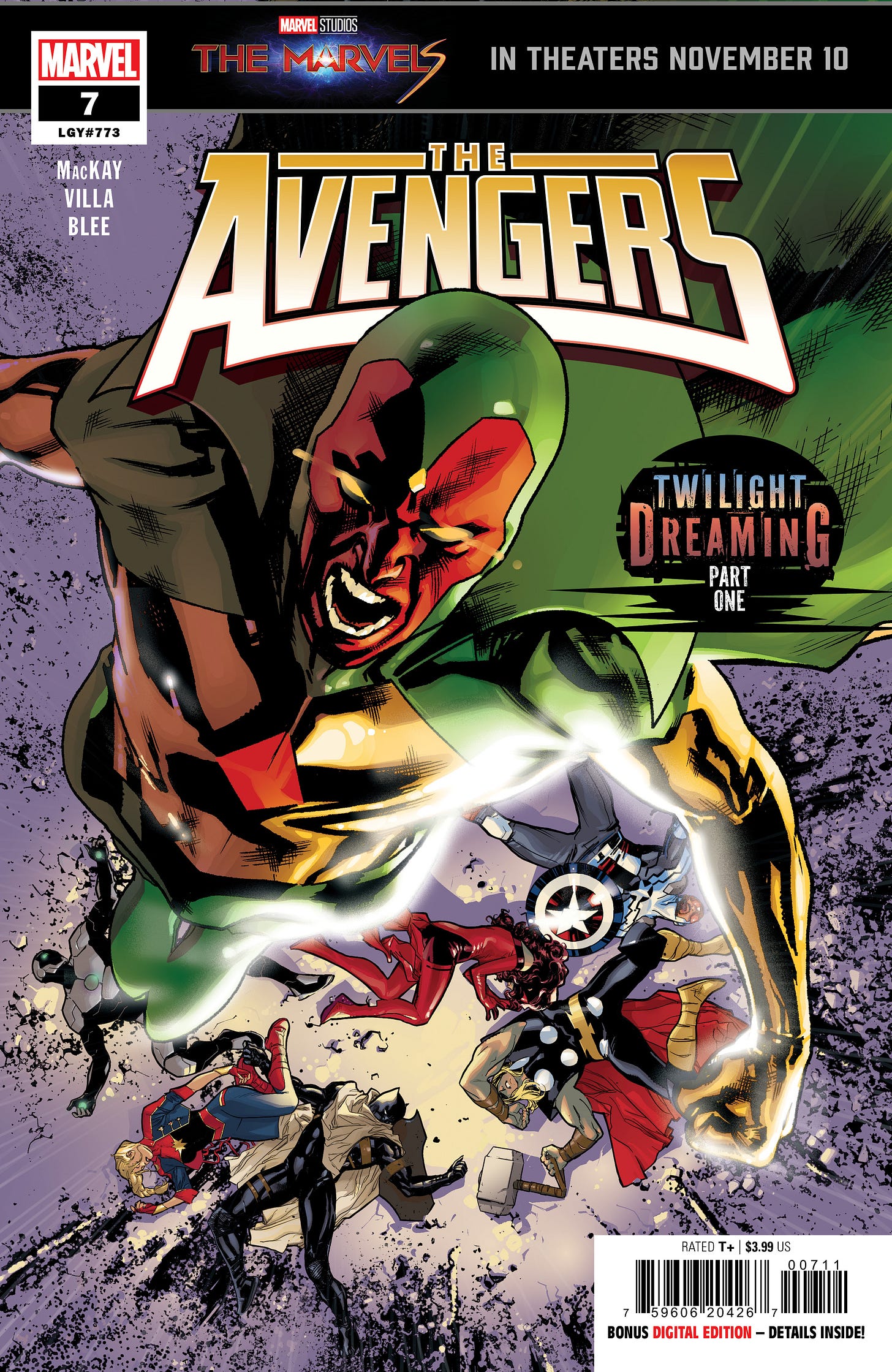

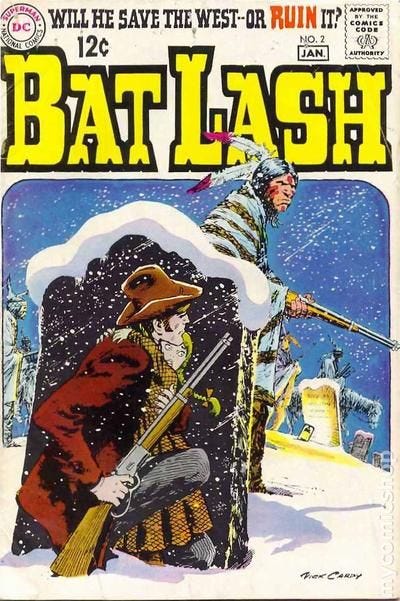
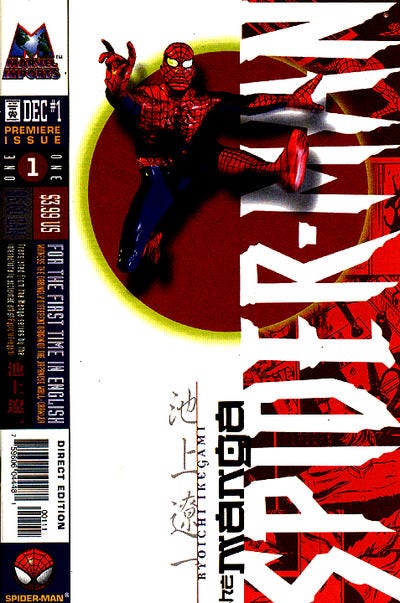

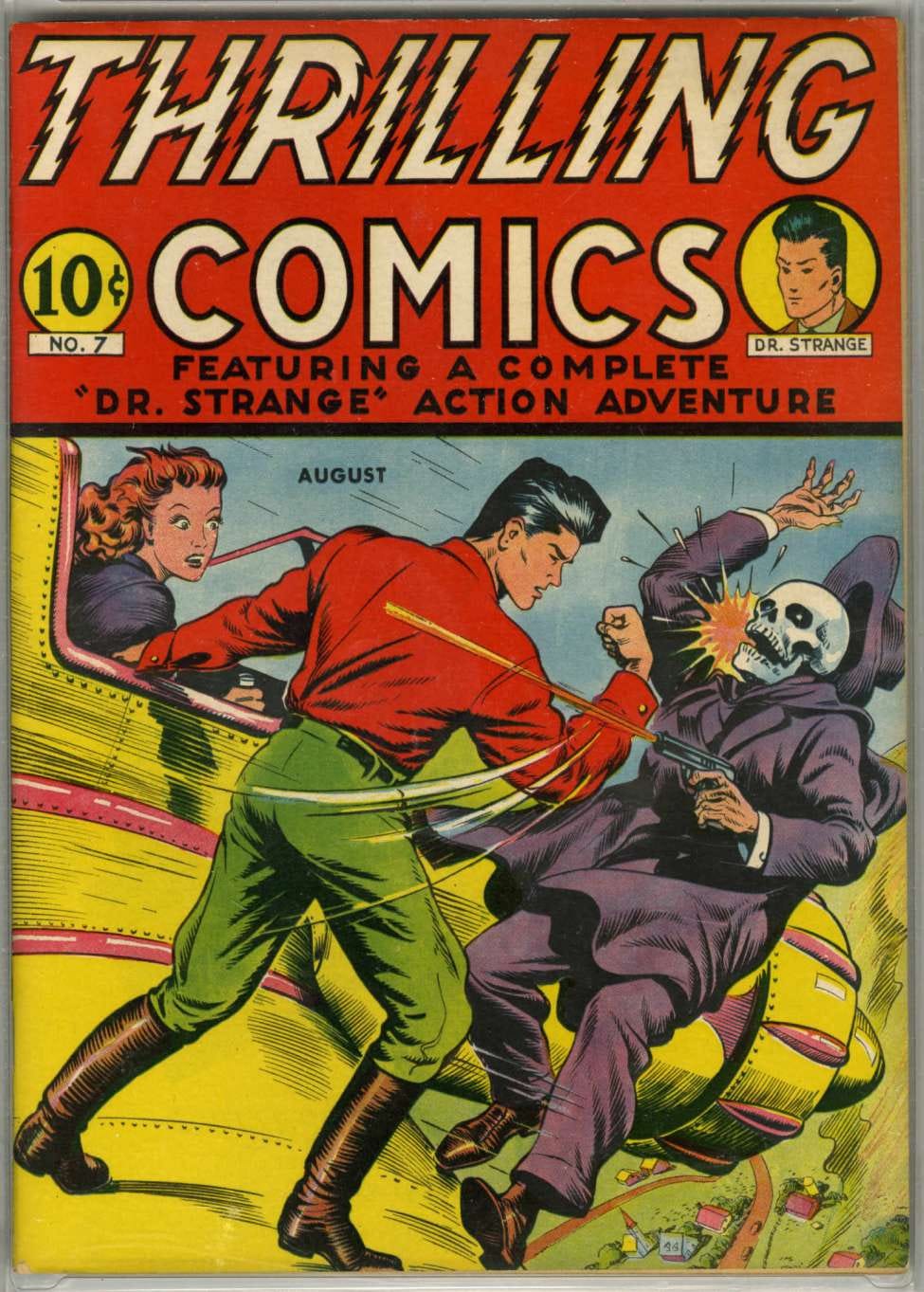
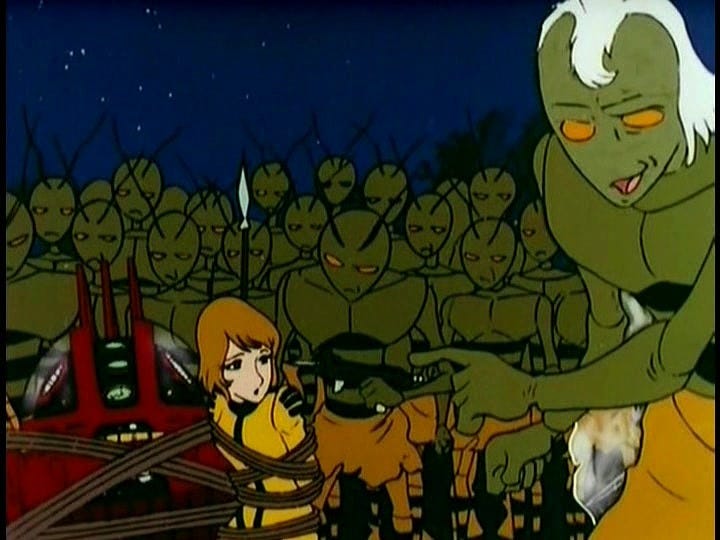
The Marvel 75th is available on Comixology. I bought it based on Tom's description and enjoyed it very much!
While I am working on my outrage, I am in shock at the Jemas revamp doc for FF. What can he have been thinking? I'm no comic book writer but turning them into a poor sitcom with a side of super-heroics seems so utterly misconceived - what of the existing readers? Who are the readers for this crazy new direction?
This doc illustrates succinctly what you've alluded to in previous Jemas stories about the man's erratic decision making.
Being charitable, I suppose sometimes we encourage leaders to swing big and take a chance - but that's surely got to be tempered with some understanding of what makes a particular character/team sing. Wild.